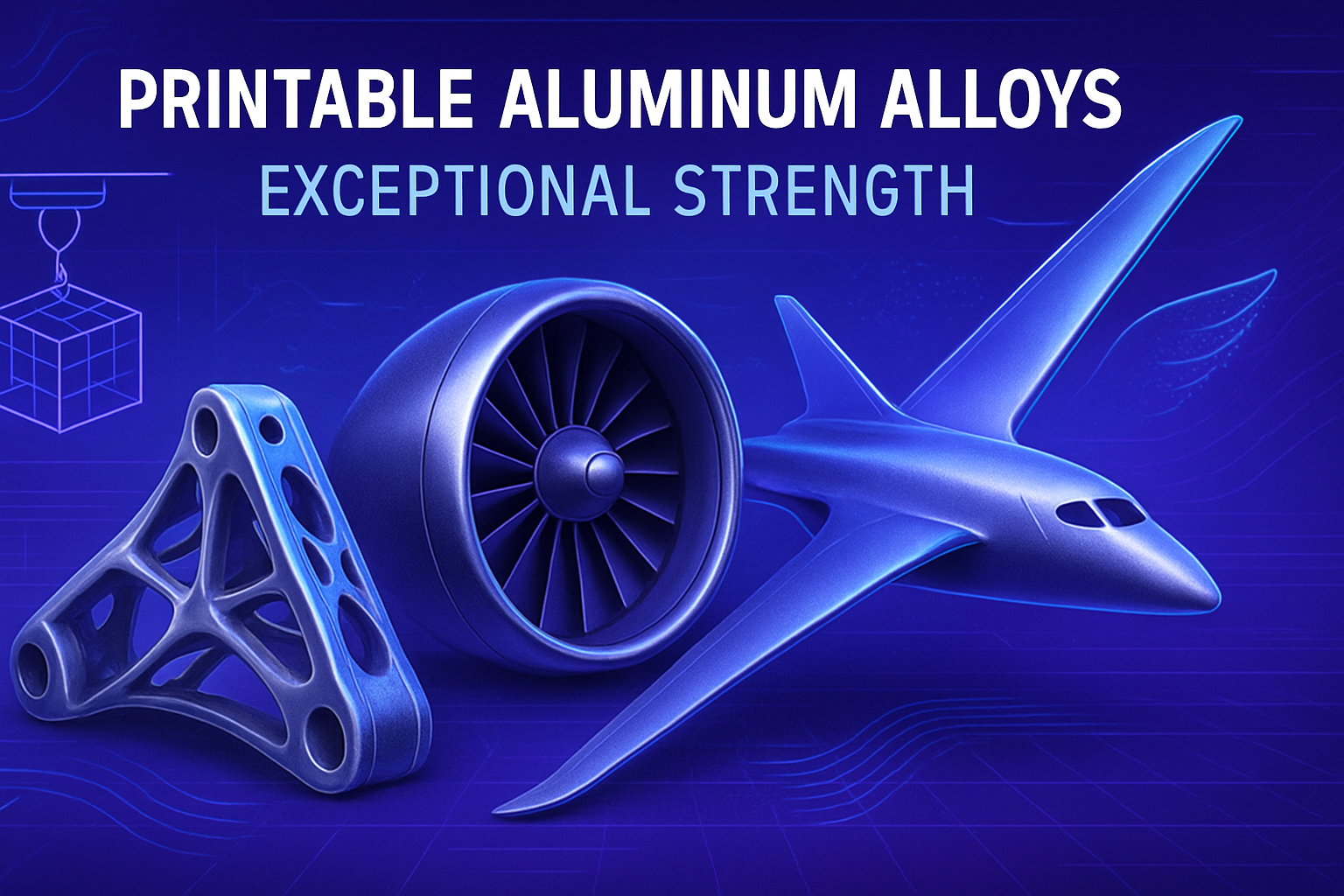Innovations and technological breakthroughs are redefining the aerospace future. Printable aluminum alloys are emerging with exceptional characteristics, surpassing the limits of strength. MIT engineers have printed aluminum alloys that exhibit a durability five times greater than conventional aluminum. With unparalleled lightness, these new materials promise improved performance for airplane parts. Their ability to withstand high temperatures makes these alloys essential for the aerospace industry. These developments pave the way for bolder designs and a significant gain in energy efficiency.
Printable aluminum alloys set strength records
MIT engineers have developed a new printable aluminum alloy capable of withstanding high temperatures while exhibiting a strength five times greater than that of traditional aluminum alloys. This innovation relies on a combination of aluminum and other elements, carefully identified through simulations and machine learning techniques. This approach has significantly reduced the number of material combinations to evaluate, from over a million possibilities to only forty compositions analyzed.
Innovative discovery process
Initially, the project emerged from a MIT course, led by Greg Olson, a materials professor. Students were invited to design an aluminum alloy superior to existing printable alloys. The strength of aluminum depends on its microstructure, for which microscopic particles known as “precipitates” play an essential role. The research team thus used computer simulations to predict the strength of different combinations of elements.
The contribution of machine learning
Taheri-Mousavi, a postdoctoral researcher at MIT, introduced machine learning to enhance the research. This technology allows for a more efficient exploration of alloy design by identifying the dominant elements affecting their properties. Through this method, the team discovered a recipe for an alloy that ensured a higher volume fraction of small precipitates, resulting in increased strength during printing.
Advantages of 3D printing
Additive manufacturing represents a significant advancement over traditional molding methods. By using laser powder fusion (LPBF), researchers were able to print the alloy while ensuring rapid and uniform cooling. This technique minimizes the waiting time required for solidification and promotes the formation of an optimal structure and mechanical properties.
Promising applications for the aerospace industry
Researchers envision a future where these aluminum alloys will be used to produce lighter and more efficient aerospace parts, particularly fan blades used in aircraft engines. Historically, these components are often made from titanium, a heavier and significantly more expensive material. The adoption of aluminum alloys could significantly reduce weight and production costs while minimizing energy consumption in the transportation sector.
Exceptional characteristics of the new alloy
Tests conducted on printed samples confirmed the strength predictions established by machine learning: the alloy outperforms cast alloys. At temperatures reaching up to 400 degrees Celsius, it withstands admirably, making it a viable solution for high-temperature applications. Controlling the microstructure has allowed for achieving a greater density of precipitates, ensuring increased durability and mechanical integrity.
Future prospects for alloy research
The research team plans to apply similar methods for optimizing various properties of alloys to broaden their range of applications. Future developments could push the boundaries of additive manufacturing and offer innovative solutions in diverse fields such as high-end automobiles and cooling devices for data centers. This research, published in the journal Advanced Materials, marks a turning point in the field of high-performance materials.
FAQ on printable aluminum alloys and their properties
What is a printable aluminum alloy and what are its main characteristics?
A printable aluminum alloy is a formulation of aluminum combined with other elements that allows it to be made via 3D printing. These alloys offer properties such as increased strength, lightweight, and resistance to high temperatures, making their use potentially advantageous in aerospace applications.
How do printable aluminum alloys compare to traditional aluminum alloys?
Printable aluminum alloys can be up to five times stronger than traditional alloys made through molding methods. Additionally, they offer greater design flexibility due to additive manufacturing, allowing for the creation of complex shapes.
What are the advantages of using printable aluminum alloys in the aerospace industry?
The use of printable aluminum alloys allows for reducing the weight of airplane parts, which can lead to significant fuel savings. Furthermore, the reduction in production costs and the ability to design custom parts are key benefits.
What specific applications could benefit from printable aluminum alloys?
These alloys can be used in various applications in aerospace, such as fan blades for engines, components of high-performance vehicles, as well as cooling devices for data centers.
What is the importance of microstructure in printable aluminum alloys?
The microstructure plays a crucial role in the strength of aluminum alloys. A higher density of smaller precipitates contributes to increased strength. Modern methods, including machine learning, enable the optimization of microstructure to enhance performance.
How does 3D printing technology influence the manufacturing of aluminum alloys?
3D printing technology allows for rapid solidification of alloys, which conveys special properties such as better high-temperature resistance. This means production can be faster with less material waste.
What innovations have improved the creation of these aluminum alloys?
Advancements in computer simulation and machine learning have allowed for faster identification of ideal compositions for these alloys, reducing the need to evaluate millions of possible combinations, and providing more reliable results.






